Abstract
Human leishmaniases are caused by at least 13 different species and subspecies of parasite of the genus Leishmania. These parasites are transmitted to man from other infected persons or mammals by sandflies when taking a blood meal. Leishmaniases have been reported from about 80 countries and probably some 400 000 new cases occur each year. Clinically the leishmaniases can be divided into three major groups: visceral leishmaniases, which are usually fatal if untreated; cutaneous leishmaniases, which often produce permanent facial disfigurement; and mucocutaneous leishmaniasis of the New World, which produces severe mutilation by destruction of the naso—oro—pharyngeal cavity and sometimes death. Since the various forms of leishmaniasis differ substantially from each other in their epidemiology, the strategy for control must be adapted to the local situation in each endemic area, after thorough ecological and epidemiological studies of the vectors, the hosts, and the landscape. If insufficient baseline information is available, failure of haphazardly applied control measures can be expected. Peridomestic insecticide spraying together with treatment of patients is effective in certain foci of anthroponotic cutaneous leishmaniasis, urban visceral leishmaniasis, and uta. Extensive programmes to eradicate desert rodents, combined with land reclamation, resulted in a considerable decrease in the incidence of zoonotic cutaneous leishmaniasis in vast areas of the USSR. Since control of zoonotic cutaneous/mucocutaneous leishmaniasis of the New World is hardly feasible at present, the only rational approach to prevent some of mucosal lesions is early diagnosis and radical treatment of patients with the rather unsatisfactory drugs at present available.
Full text
PDF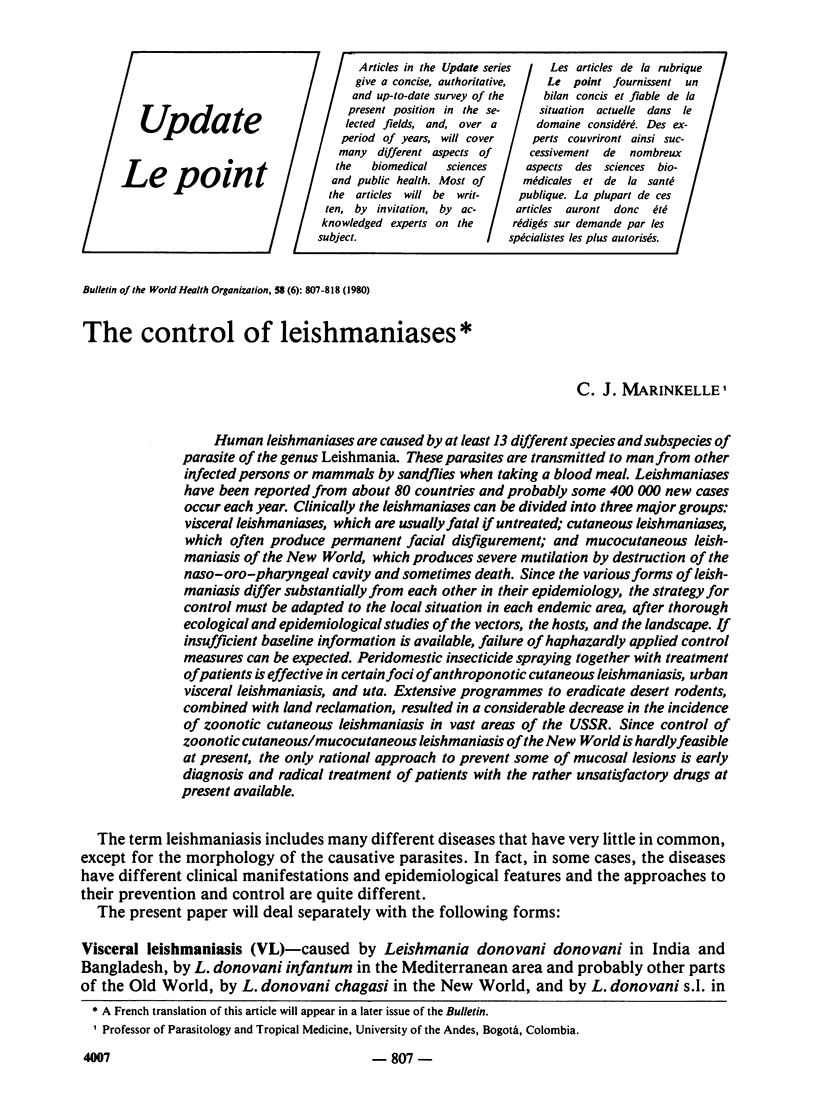
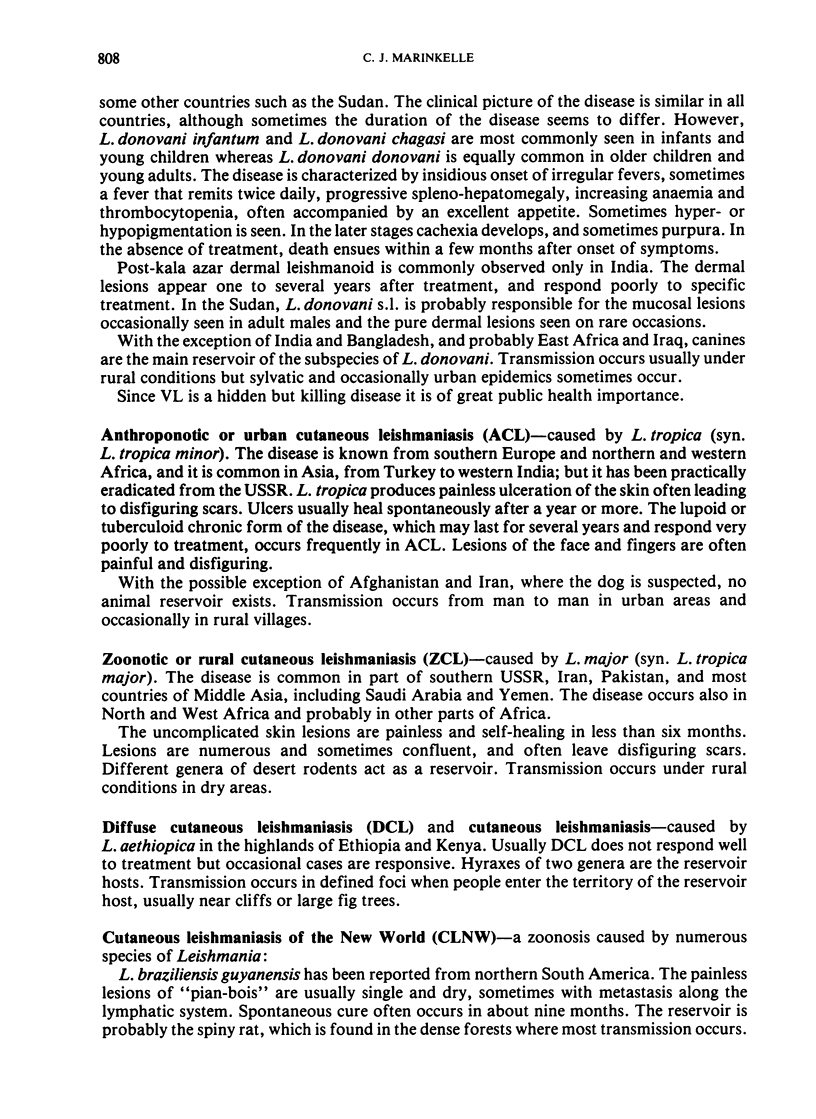
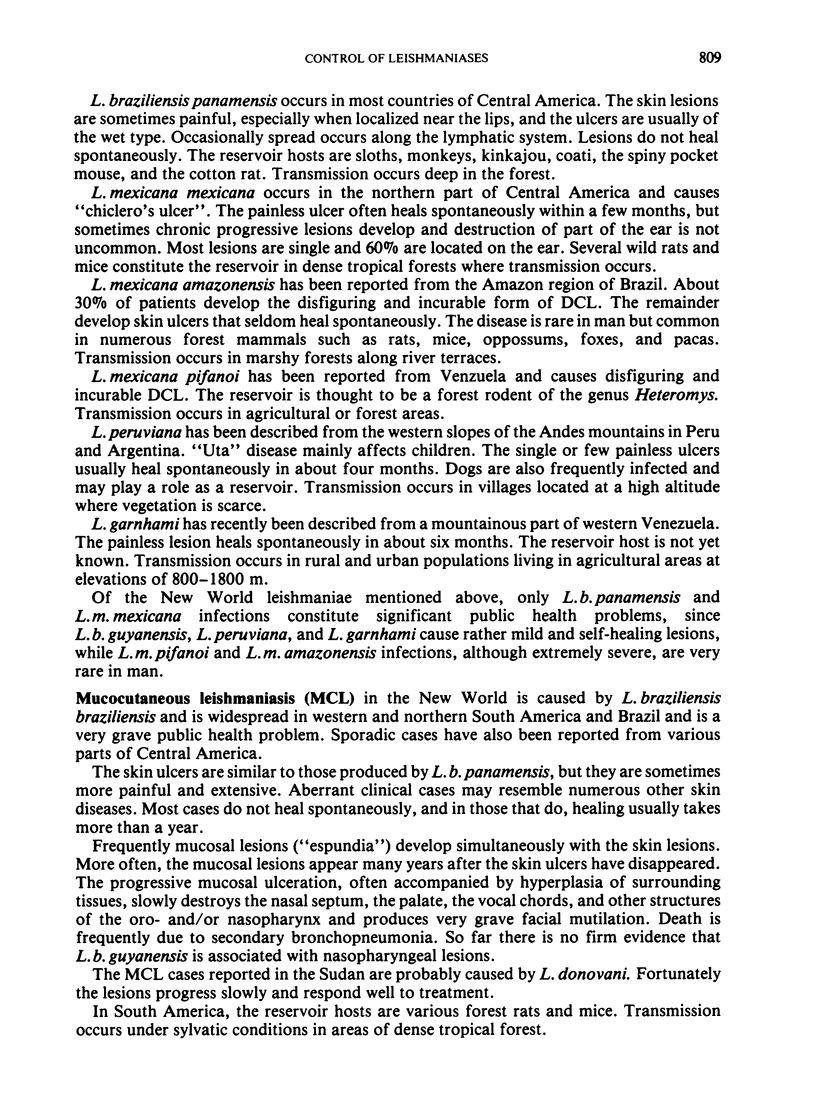
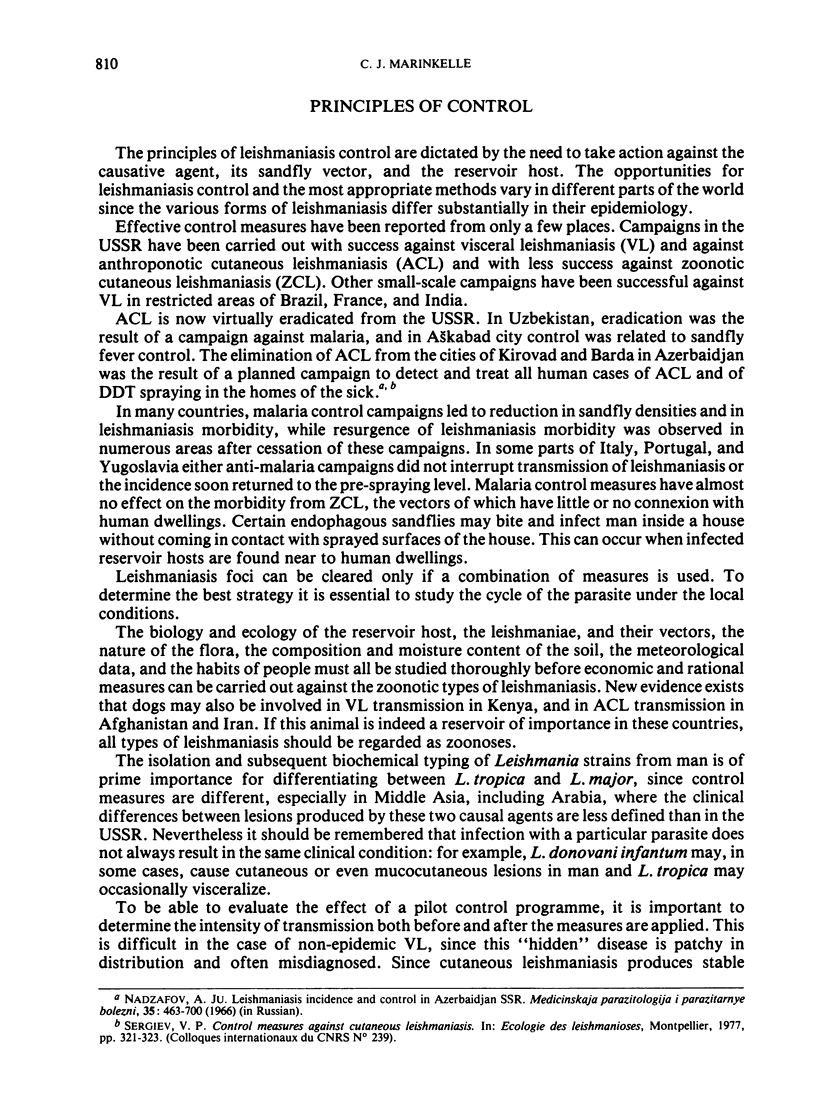
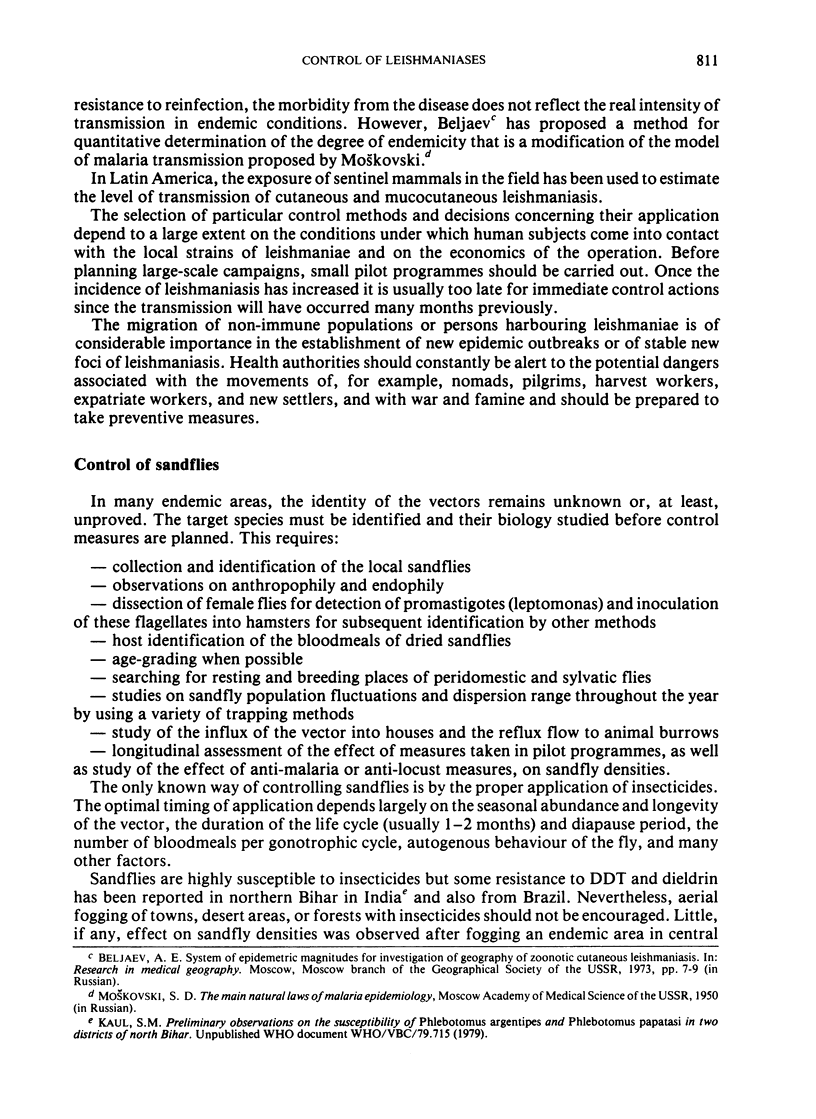
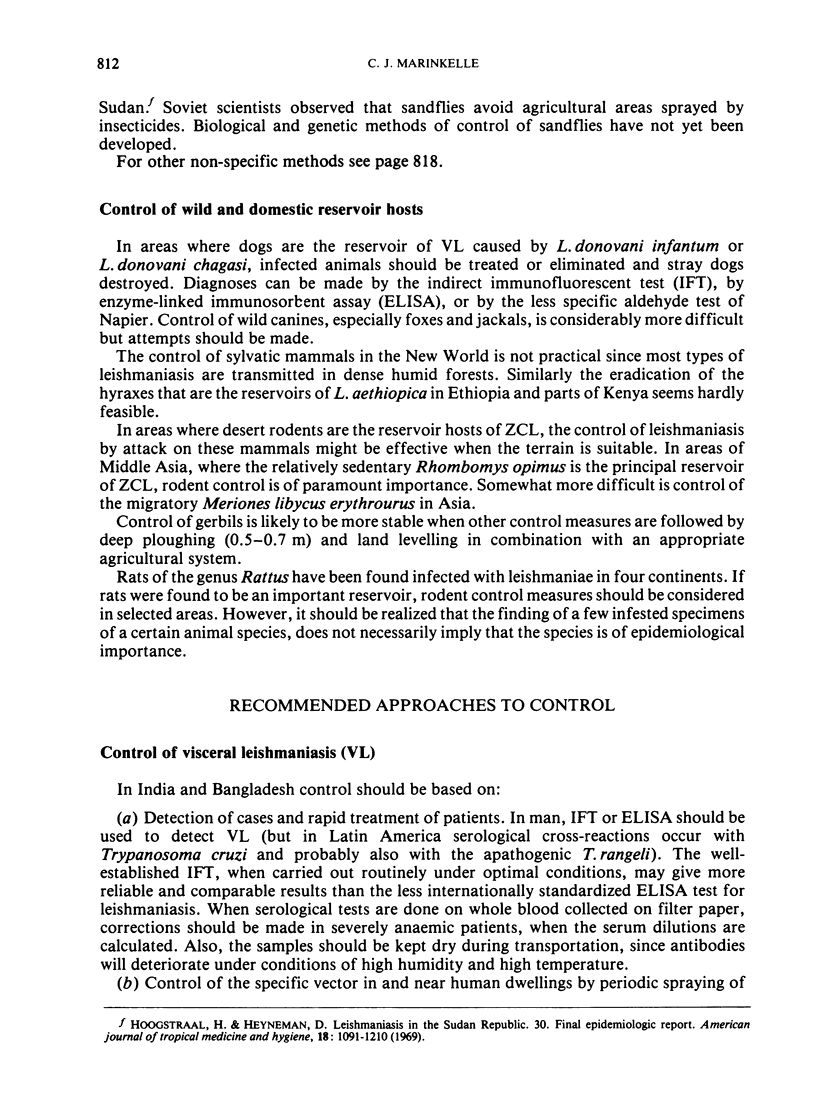
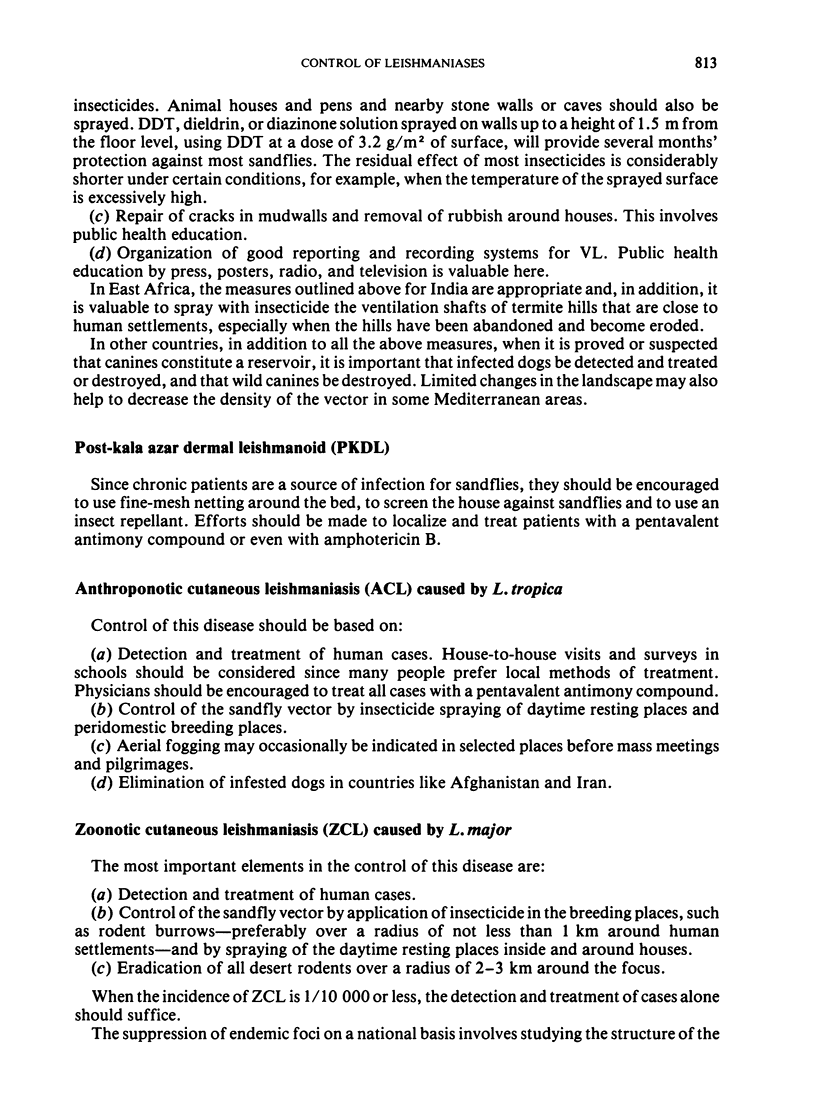
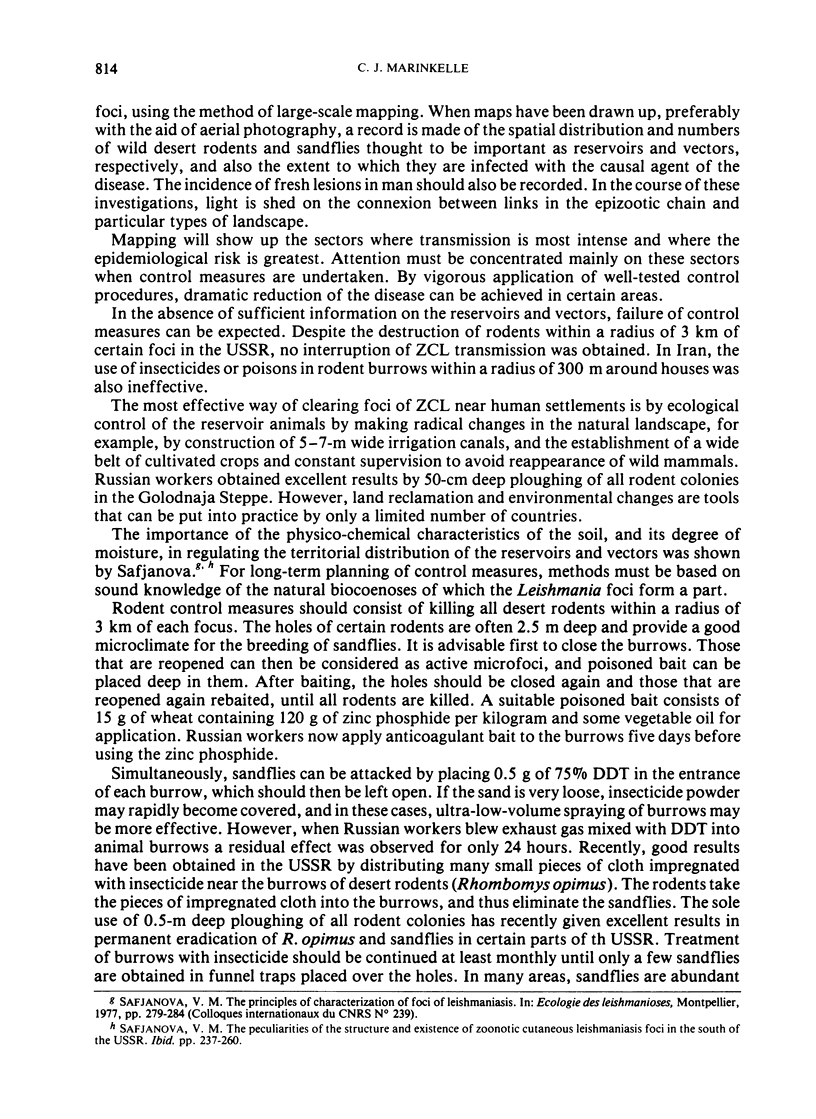

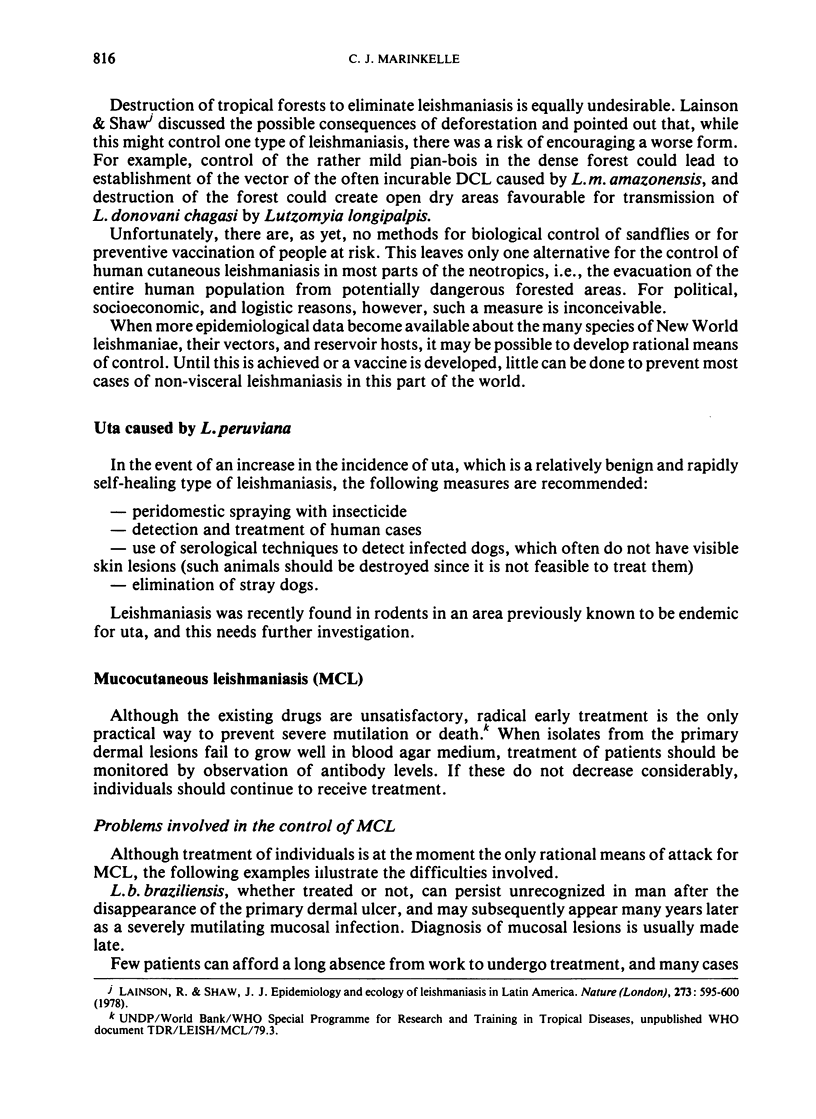


Selected References
These references are in PubMed. This may not be the complete list of references from this article.
- Bryceson A. D. Diffuse cutaneous leishmaniasis in Ethiopia. 3. Immunological studies. IV. Pathogenesis of diffuse cutaneous leishmaniasis. Trans R Soc Trop Med Hyg. 1970;64(3):380–393. doi: 10.1016/0035-9203(70)90174-4. [DOI] [PubMed] [Google Scholar]
- Herrer A., Christensen H. A., Beumer R. J. Epidemiological patterns of cutaneous leishmaniasis in Panama. II. Incidental occurrence of cases in non-endemic settlements. Ann Trop Med Parasitol. 1976 Mar;70(1):67–71. doi: 10.1080/00034983.1976.11687096. [DOI] [PubMed] [Google Scholar]
- Lainson R., Shaw J. J. Epidemiology and ecology of leishmaniasis in Latin-America. Nature. 1978 Jun 22;273(5664):595–600. doi: 10.1038/273595a0. [DOI] [PubMed] [Google Scholar]


